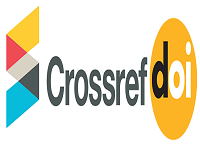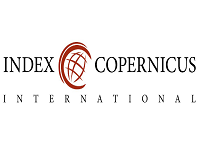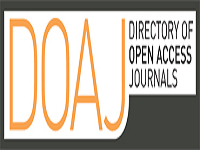The Influence of Work Ability, Work Motivation, and Employee Engagement on Employee Performance at PT. Nenggapratama Internusa
Keywords:
Work Ability, Work Motivation, Employee Engagement, Employee Performance, PT Nenggapratama InternusaAbstract
Employee performance measurement is the company's initial effort to identify skill gaps and ensure that each individual contributes maximally to the achievement of sales targets and dealer operations. This study aims to analyze the influence of work ability, work motivation, and employee engagement on employee performance at PT. Nenggapratama Internusa, a Suzuki Car Dealer in Gorontalo. The research method is quantitative descriptive where the research data was obtained through a questionnaire with saturated sampling totaling 68 employees using a multiple linear regression analysis approach. The results of the study indicate that work ability and work motivation have a positive and significant effect on employee performance, but not for employee engagement on employee performance which was found to have a positive and insignificant effect. Companies need to encourage employee capability improvement through appropriate training and increasing their work motivation. Increasing employee engagement by means of appreciation and providing incentives based on target achievement is expected to improve employee performance
Downloads
References
1. Ahmad, Prof. S. (2021). Motivation and Performance: A Psychological Process. International Journal of Business and Management Research, 9(2), 104–112. https://doi.org/10.37391/IJBMR.090201
2. Algarni, M. A., & Alemeri, M. (2023). The Role of Employee Engagement, Job Satisfaction and Organizational Commitment on Happiness at Work at a Saudi Organization. International Journal of Business and Management, 18(2), 27. https://doi.org/10.5539/ijbm.v18n2p27
3. Ankli, R. E., & Palliam, R. (2012). Enabling a motivated workforce: Exploring the sources of motivation. Development and Learning in Organizations: An International Journal, 26(2), 7–10. https://doi.org/10.1108/14777281211201169
4. Ashforth, B. E., & Humphrey, R. H. (1993). Emotional Labor in Service Roles: The Influence of Identity. The Academy of Management Review, 18(1), 88. https://doi.org/10.2307/258824
5. Azizi, M. R., Atlasi, R., Ziapour, A., Abbas, J., & Naemi, R. (2021). Innovative human resource management strategies during the COVID-19 pandemic: A systematic narrative review approach. Heliyon, 7(6), e07233. https://doi.org/10.1016/j.heliyon.2021.e07233
6. Bakker, A. B., Demerouti, E., & Sanz-Vergel, A. I. (2014). Burnout and Work Engagement: The JD–R Approach. Annual Review of Organizational Psychology and Organizational Behavior, 1(1), 389–411. https://doi.org/10.1146/annurev-orgpsych-031413-091235
7. Baron, J. N., & Hannan, M. T. (2002). Organizational Blueprints for Success in High-Tech Start-Ups: Lessons from the Stanford Project on Emerging Companies. California Management Review, 44(3), 8–36. https://doi.org/10.2307/41166130
8. Bera, R. K. (2021). COVID-19 Catalyzed Disruptions to Life and Livelihood. SSRN Electronic Journal. https://doi.org/10.2139/ssrn.3935942
9. Bonett, D. G., & Wright, T. A. (2015). Cronbach’s alpha reliability: Interval estimation, hypothesis testing, and sample size planning. Journal of Organizational Behavior, 36(1), 3–15. https://doi.org/10.1002/job.1960
10. Boussemart, J.-P., Leleu, H., Shen, Z., Vardanyan, M., & Zhu, N. (2019). Decomposing banking performance into economic and credit risk efficiencies. European Journal of Operational Research, 277(2), 719–726. https://doi.org/10.1016/j.ejor.2019.03.006
11. Butt, M. A., Nawaz, F., Hussain, S., Sousa, M. J., Wang, M., Sumbal, M. S., & Shujahat, M. (2019). Individual knowledge management engagement, knowledge-worker productivity, and innovation performance in knowledge-based organizations: The implications for knowledge processes and knowledge-based systems. Computational and Mathematical Organization Theory, 25(3), 336–356. https://doi.org/10.1007/s10588-018-9270-z
12. Chomać-Pierzecka, E., Dyrka, S., Kokiel, A., & Urbańczyk, E. (2024). Sustainable HR and Employee Psychological Well-Being in Shaping the Performance of a Business. Sustainability, 16(24), 10913. https://doi.org/10.3390/su162410913
13. Daoud, J. I. (2017). Multicollinearity and Regression Analysis. Journal of Physics: Conference Series, 949, 012009. https://doi.org/10.1088/1742-6596/949/1/012009
14. Fischer, C., Malycha, C. P., & Schafmann, E. (2019). The Influence of Intrinsic Motivation and Synergistic Extrinsic Motivators on Creativity and Innovation. Frontiers in Psychology, 10, 137. https://doi.org/10.3389/fpsyg.2019.00137
15. Gebauer, H., Friedli, T., & Fleisch, E. (2006). Success factors for achieving high service revenues in manufacturing companies. Benchmarking: An International Journal, 13(3), 374–386. https://doi.org/10.1108/14635770610668848
16. Gupta, N., & Sharma, V. (2016). Exploring Employee Engagement—A Way to Better Business Performance. Global Business Review, 17(3_suppl), 45S-63S. https://doi.org/10.1177/0972150916631082
17. Hennig‐Thurau, T. (2004). Customer orientation of service employees: Its impact on customer satisfaction, commitment, and retention. International Journal of Service Industry Management, 15(5), 460–478. https://doi.org/10.1108/09564230410564939
18. Ho, H., & Kuvaas, B. (2020). Human resource management systems, employee well‐being, and firm performance from the mutual gains and critical perspectives: The well‐being paradox. Human Resource Management, 59(3), 235–253. https://doi.org/10.1002/hrm.21990
19. Houdmont, J., & Leka, S. (Eds.). (2010). Contemporary Occupational Health Psychology: Global Perspectives on Research and Practice (1st ed.). Wiley. https://doi.org/10.1002/9780470661550
20. Jaya, L. H. S., & Ariyanto, E. (2021). The Effect of Vigor, Dedication and Absorption on the Employee Performance of PT Garuda Indonesia Cargo. European Journal of Business and Management Research, 6(4), 311–316. https://doi.org/10.24018/ejbmr.2021.6.4.1006
21. Ketchen, D. J., Thomas, J. B., & McDaniel, R. R. (1996). Process, Content and Context: Synergistic Effects on Organizational Performance. Journal of Management, 22(2), 231–257. https://doi.org/10.1177/014920639602200203
22. Lantos, G. P. (1999). Motivating moral corporate behavior. Journal of Consumer Marketing, 16(3), 222–233. https://doi.org/10.1108/07363769910271469
23. Lee, M. T., & Raschke, R. L. (2016). Understanding employee motivation and organizational performance: Arguments for a set-theoretic approach. Journal of Innovation & Knowledge, 1(3), 162–169. https://doi.org/10.1016/j.jik.2016.01.004
24. Leijten, F., R., Van den Heuvel, S., G., Ybema, J., F., Van der Beek, A., J., Robroek, S., J., & Burdorf, A. (2014). The influence of chronic health problems on work ability and productivity at work: A longitudinal study among older employees. Scandinavian Journal of Work, 40(5), 473–482.
25. Littman-Ovadia, H., & Lavy, S. (2016). Going the Extra Mile: Perseverance as a Key Character Strength at Work. Journal of Career Assessment, 24(2), 240–252. https://doi.org/10.1177/1069072715580322
26. Luo, H. W., & Jayasingam, S. (2024). Maximizing Work Effort: Harnessing Perceived Training Opportunities and Intrinsic Motivation. Asian Journal of Business and Accounting, 17(2), 321–354. https://doi.org/10.22452/ajba.vol17no2.9
27. Macey, W. H., & Schneider, B. (2008). The Meaning of Employee Engagement. Industrial and Organizational Psychology, 1(1), 3–30. https://doi.org/10.1111/j.1754-9434.2007.0002.x
28. Mache, S., Vitzthum, K., Wanke, E., Groneberg, Klapp, B. F., & Danzer, G. (2014). Exploring the impact of resilience, self-efficacy, optimism and organizational resources on work engagement. WORK: A Journal of Prevention, Assessment & Rehabilitation, 47(4), 491–500. https://doi.org/10.3233/WOR-131617
29. Malik, M. A. R., Choi, J. N., & Butt, A. N. (2019). Distinct effects of intrinsic motivation and extrinsic rewards on radical and incremental creativity: The moderating role of goal orientations. Journal of Organizational Behavior, 40(9–10), 1013–1026. https://doi.org/10.1002/job.2403
30. Margherita, A., & Heikkilä, M. (2021). Business continuity in the COVID-19 emergency: A framework of actions undertaken by world-leading companies. Business Horizons, 64(5), 683–695. https://doi.org/10.1016/j.bushor.2021.02.020
31. Marinova, D., Ye, J., & Singh, J. (2008). Do Frontline Mechanisms Matter? Impact of Quality and Productivity Orientations on Unit Revenue, Efficiency, and Customer Satisfaction. Journal of Marketing, 72(2), 28–45. https://doi.org/10.1509/jmkg.72.2.28
32. Marzuki, Chaidir, Afrizal, Akmal, & Sufriadi, D. (2024). Work Enthusiasm in Supporting Employee Productivity (A Literature Review). Proceedings of International Conference on Multidiciplinary Research, 6(1), 150–157. https://doi.org/10.32672/picmr.v6i1.769
33. Morgeson, F. P., Delaney-Klinger, K., & Hemingway, M. A. (2005). The Importance of Job Autonomy, Cognitive Ability, and Job-Related Skill for Predicting Role Breadth and Job Performance. Journal of Applied Psychology, 90(2), 399–406. https://doi.org/10.1037/0021-9010.90.2.399
34. Mowday, R. T. (1984). Strategies for adapting to high rates of employee turnover. Human Resource Management, 23(4), 365–380. https://doi.org/10.1002/hrm.3930230404
35. Mustafa, B., & Lleshi, S. (2024). The impact of lifelong learning and investments in employee development on employee productivity and performance. Multidisciplinary Reviews, 7(8), 2024175. https://doi.org/10.31893/multirev.2024175
36. Nawawi, A., Pakaya, Abd. R., & Rahman, E. (2020). The Influence Of The Work Environment On Employee Work Motivation At PT. Loka Indah Lestari Pohuwato. Jambura Science of Management, 2(1), 33–36. https://doi.org/10.37479/jsm.v2i1.4437
37. Ochieng, E. M. (2023). A Study of the History, Functions, Roles, and Challenges of Human Resources Management. Journal of Enterprise and Business Intelligence, 54–64. https://doi.org/10.53759/5181/JEBI202303006
38. Rew, D., Jung, J., & Lovett, S. (2020). Examining the relationships between innovation, quality, productivity, and customer satisfaction in pure service companies. The TQM Journal, 33(1), 57–70. https://doi.org/10.1108/TQM-10-2019-0235
39. Rezaei, A. R., Çelik, T., & Baalousha, Y. (2011). Performance measurement in a quality management system. Scientia Iranica, 18(3), 742–752. https://doi.org/10.1016/j.scient.2011.05.021
40. Robertson, I. T., & Cooper, C. L. (2010). Full engagement: The integration of employee engagement and psychological well‐being. Leadership & Organization Development Journal, 31(4), 324–336. https://doi.org/10.1108/01437731011043348
41. Saks, A. M., & Gruman, J. A. (2014). What Do We Really Know About Employee Engagement? Human Resource Development Quarterly, 25(2), 155–182. https://doi.org/10.1002/hrdq.21187
42. Sanil, H. S., Singh, D., Raj, K. B., Choubey, S., Bhasin, N. K. K., Yadav, R., & Gulati, K. (2022). RETRACTED: Role of machine learning in changing social and business eco-system – a qualitative study to explore the factors contributing to competitive advantage during COVID pandemic. World Journal of Engineering, 19(2), 238–243. https://doi.org/10.1108/WJE-06-2021-0357
43. Schaltegger, S. (2021). Sustainability learnings from the COVID-19 crisis. Opportunities for resilient industry and business development. Sustainability Accounting, Management and Policy Journal, 12(5), 889–897. https://doi.org/10.1108/SAMPJ-08-2020-0296
44. Sulich, A., & Sołoducho-Pelc, L. M. (2025). Sustainable development in production companies: Integrating environmental strategy and green management style. Discover Sustainability, 6(1), 434. https://doi.org/10.1007/s43621-025-01152-6
45. Sunardi, Purnomo, & Sutadji, E. (2016). Employability skills measurement model’s of vocational student. 030043. https://doi.org/10.1063/1.4965777
46. Suprayitno, D. (2024). Key Factors of Employee Performance and Sustainable HR Practices in Indonesian Manufacturing Industry. Sinergi International Journal of Management and Business, 2(1), 57–72. https://doi.org/10.61194/ijmb.v2i1.135
47. Tengland, P.-A. (2011). The Concept of Work Ability. Journal of Occupational Rehabilitation, 21(2), 275–285. https://doi.org/10.1007/s10926-010-9269-x
48. Thalib, R. R., Machmud, R., & Isa, R. A. (2025). The Effect of Price, Promotion and E-Service Through The McDonald’s Application On Consumer Buying Interest. International Journal of Multidisciplinary Applied and Science Research, 01(03), 115–124.
49. Ulrich, D., & Lake, D. (1991). Organizational capability: Creating competitive advantage. Academy of Management Perspectives, 5(1), 77–92. https://doi.org/10.5465/ame.1991.4274728
50. Van Beek, I., Hu, Q., Schaufeli, W. B., Taris, T. W., & Schreurs, B. H. J. (2012). For Fun, Love, or Money: What Drives Workaholic, Engaged, and Burned‐Out Employees at Work? Applied Psychology, 61(1), 30–55. https://doi.org/10.1111/j.1464-0597.2011.00454.x
51. Varianou-Mikellidou, C., Boustras, G., Nicolaidou, O., Dimopoulos, C., Anyfantis, I., & Messios, P. (2020). Work-related factors and individual characteristics affecting work ability of different age groups. Safety Science, 128, 104755. https://doi.org/10.1016/j.ssci.2020.104755
52. Vosloban, R. I. (2012). The Influence of the Employee’s Performance on the Company’s Growth—A Managerial Perspective. Procedia Economics and Finance, 3, 660–665. https://doi.org/10.1016/S2212-5671(12)00211-0
53. Wahyanto, T., Damayanti, N. A., Supriyanto, S., & Hartini, S. (2019). Effect of Happiness at Work on Employee Engagement and Intention to Stay of Hospital Employees. Indian Journal of Public Health Research & Development, 10(12), 2017. https://doi.org/10.37506/v10/i12/2019/ijphrd/192170
54. Widodo, W. B., & Pakaja, F. (2025). Analysis of the Influence of Trust, Security and E-Service on Purchasing Decisions for Climbing Tickets Through The Tiket Pendakian Application. International Journal of Economics and Business, 1(3), 134–140.
55. Zhang, W., Zeng, X., Liang, H., Xue, Y., & Cao, X. (2023). Understanding How Organizational Culture Affects Innovation Performance: A Management Context Perspective. Sustainability, 15(8), 6644. https://doi.org/10.3390/su15086644

Downloads
Published
Issue
Section
License
Copyright (c) 2025 International Journal of Economics and Business Management

This work is licensed under a Creative Commons Attribution-NonCommercial-ShareAlike 4.0 International License.


 .
.









